- Availability: Out Of Stock
- Made & Mkt by: Gaatha
- Product Code: 0303-MBC25-3
- Weight: 300.00g
- Dimensions: 10.00cm x 5.00cm x 5.00cm
More than art, these paintings are a living language of Goncha, Bastar Dussehra, Hareli, and nights of dance and laughter. As they move into galleries, they bring with them echoes of community and continuity—a reminder that this tradition is life expressed on walls and canvas.
The typical dispatch time is 2-3 days; however, in special cases, it may take longer. Please refer to the product details section for specific timelines. Once dispatched, we will share the tracking details with you.
For returns, you can file a request within 24 hours of receiving the product. If the package is damaged, please make a video while unboxing and share images of the damaged item along with your return request.
9328006304 ( WhatsApp )
Among the quiet forests and red earth of Chhattisgarh lives a tradition of art as old as the people themselves, Muriya Bhitti Chitra, or Muriya wall painting. What began centuries ago as simple markings on cave walls evolved into paintings on the mud walls of homes, and eventually adorned the very heart of tribal youth culture: the ghotul.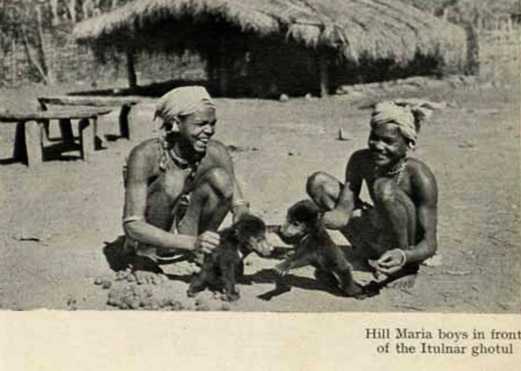
The ghotul, as anthropologist Verrier Elwin describes in The Muria and Their Ghotul, was more than a dormitory. It was a vibrant social institution where adolescent boys and girls of the Muria tribe learned not only responsibility and discipline, but also the very soul of their community. Here they practiced song, dance, craft, and the delicate art of human relationships. Within these earthen walls, painting too found its place—an act not merely of decoration, but of memory and meaning.
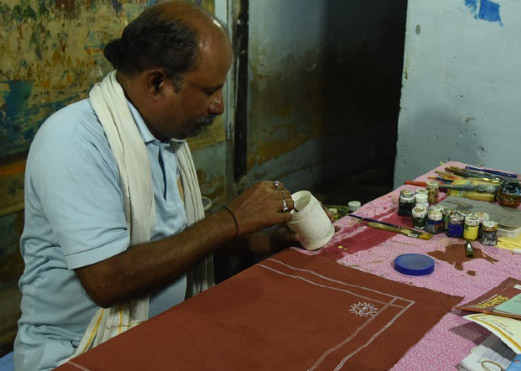
Today, this tradition has leapt from mud walls and ghotul boundaries onto canvases, carrying with it the pulse of tribal life. Each brushstroke is not simply art, it is a record of living traditions, narrating occasions both joyful and solemn: birth, marriage, death, festivals, and communal gatherings.
In this tradition, subject and elements matter more than artistic style. The paintings, though striking in their simplicity, hold profound meaning. Faces are rarely detailed, but gestures and movements are unmistakable, whether it is a drummer beating his instrument, a woman carrying grain, or dancers whirling in unison. It is action, not ornament, that defines the form.
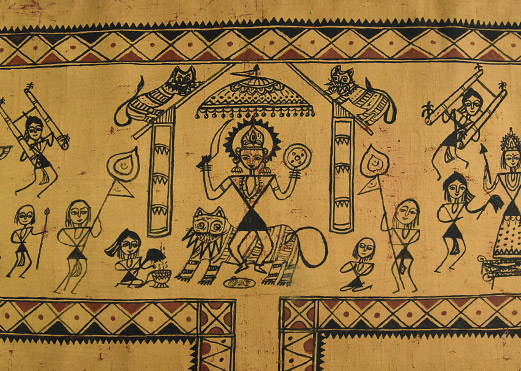
The art flourishes in two distinct styles, each deeply rooted in Muria cultural life:
Jagar Style – Dedicated to the divine, this style depicts gods and goddesses, often created during rituals, ceremonies, or seasonal festivals. These paintings are acts of devotion, binding the community to the spiritual forces they revere.
Ghotul Style – Inspired by the life of the ghotul, these paintings brim with tribal dance, music, and social interactions. They are dynamic, filled with rhythmic lines that echo the beat of the mandar drum or the swaying of dancers beneath the moonlight.
What makes Muriya Bhitti Chitra remarkable is that it cannot be replicated without knowing the culture. Each painting tells a story, and every story belongs to the shared memory of the people. To the untrained eye, the art may appear “basic”—lacking the realism of portraiture—but for those who know, it is layered with meaning.
These paintings are a living language: reminders of festivals like Goncha, Bastar Dussehra, and Hareli; of evenings filled with dance and laughter; of rituals that bind the tribe together through joy and sorrow alike.
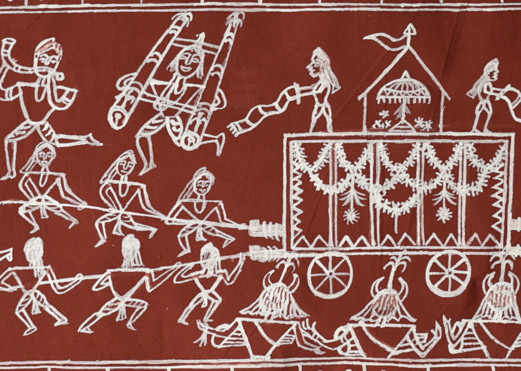
As this art form finds its way into urban galleries and curated collections, it carries a whisper from the past. It is not just paint on surface, it is the continuity of a way of life. The Muria do not paint for beauty alone; they paint to remember, to share, and to belong.
As Verrier Elwin once observed, “The ghotul is the very soul of the Muria.” In the same spirit, Muriya Bhitti Chitra is the soul made visible—a tradition that reminds us that art is not separate from life, but woven into its every breath.
| Craftsmen | |
| Made by | Rajendra Rao |
| City | Bastar |
| Details | |
| Product details | This painting is a folk art by craftsmen from a nomadic tribe. It is not a fine art product, hence, certain imperfections or initial strokes of the first draft are visible and this only adds to the raw look of the artwork. |
| Returns and Exchange | |
| Note | This painting is not return and non refundable. |
| Material | |
| Made of | Hand painted on Cotton base (Madar Pat) with geru (Red natural colour) and white c;lay . |
| Instruction | |
| About Sizes | Size - 10" x 24" Inch |
| Note | These paintings are hand-made, naturally colour and unique, these may differ ( Color & Form ) slightly from the snaps seen on digital screen. -The paintings will be shipped in folded form and without frame. -We would suggest the buyers to frame these paintings with caution. |
| Care | Wipe with dry clothe only. |

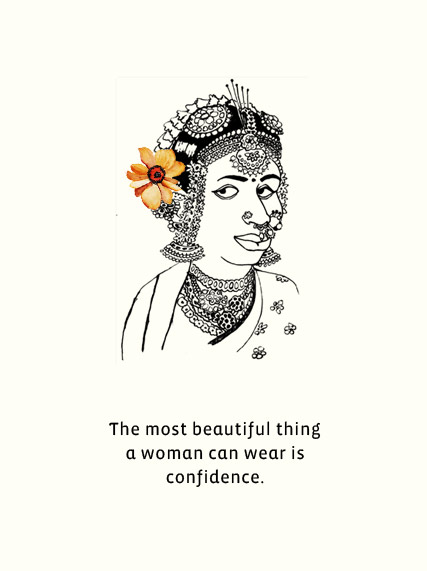

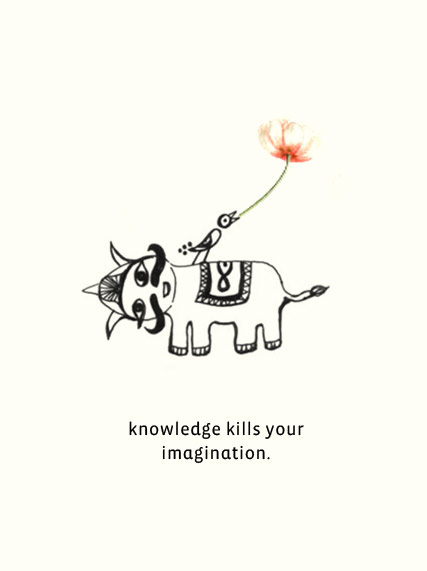

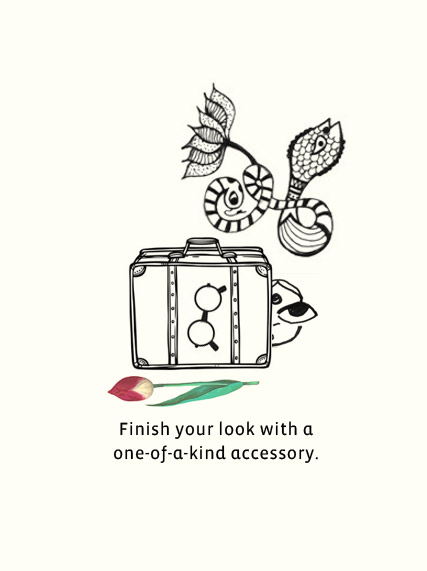
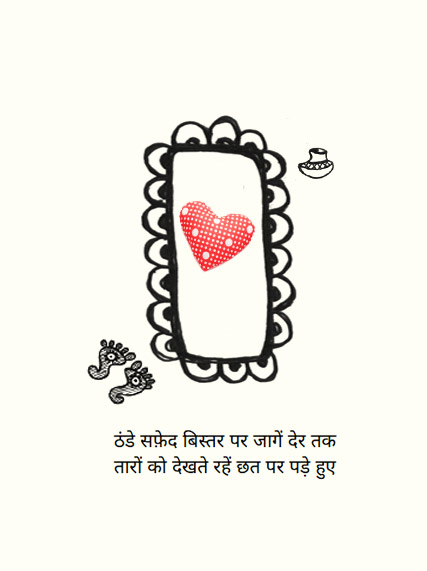

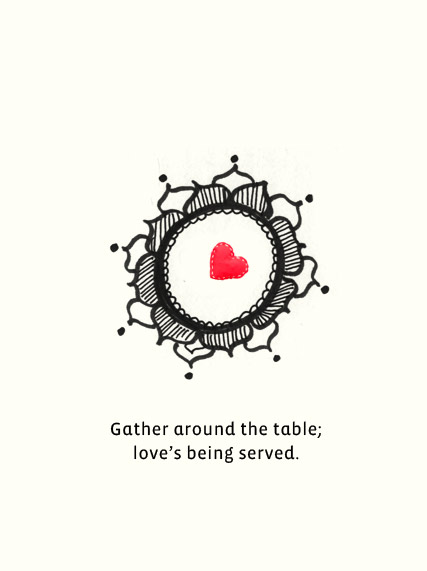
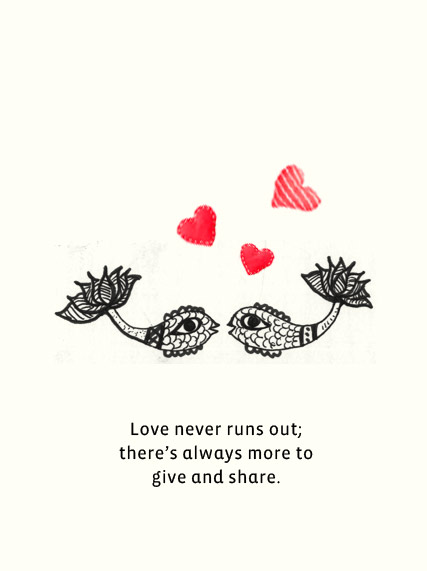
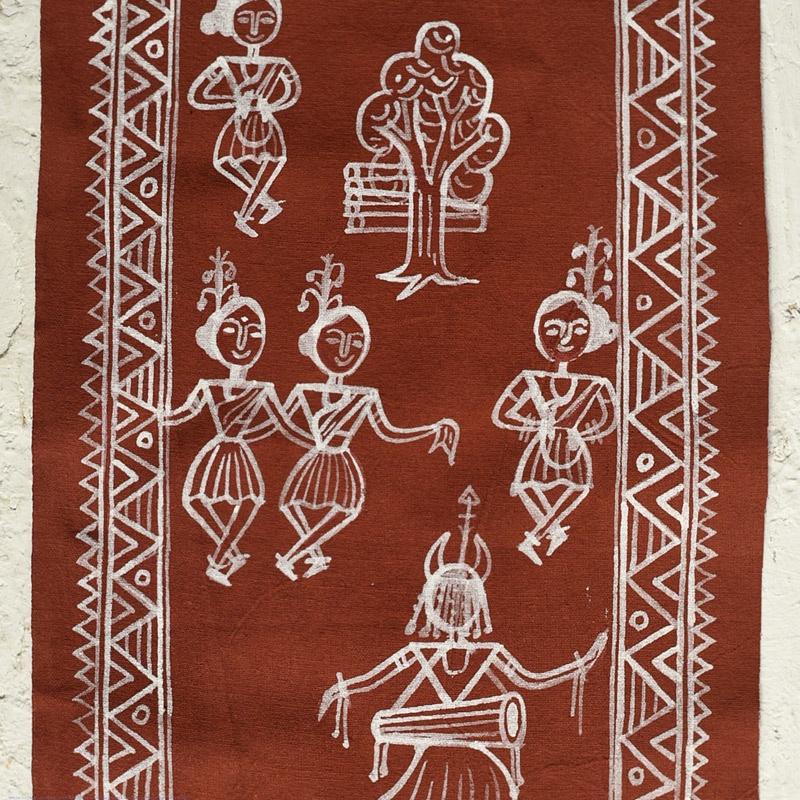
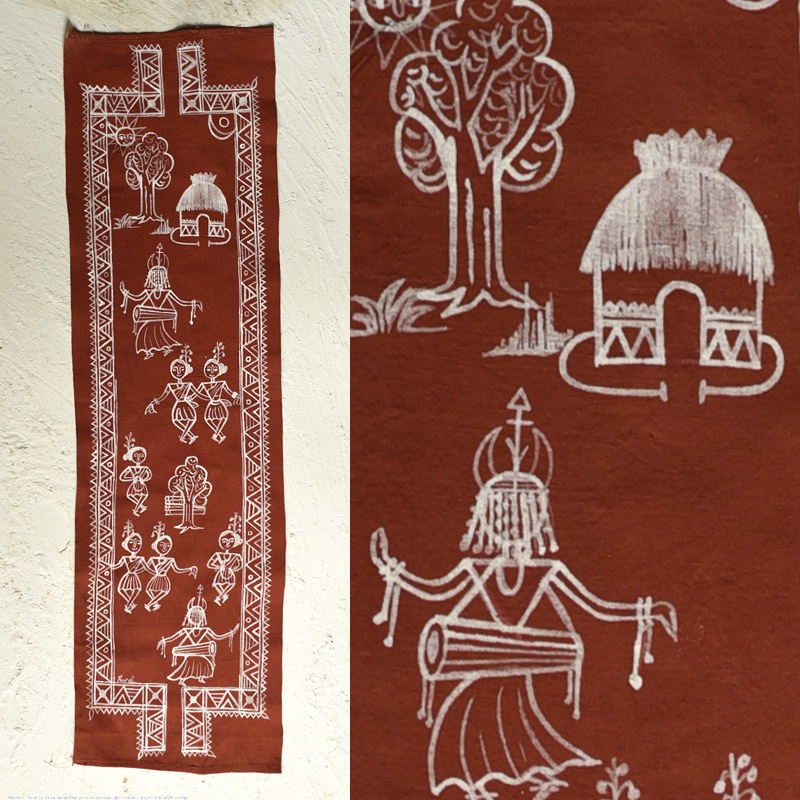
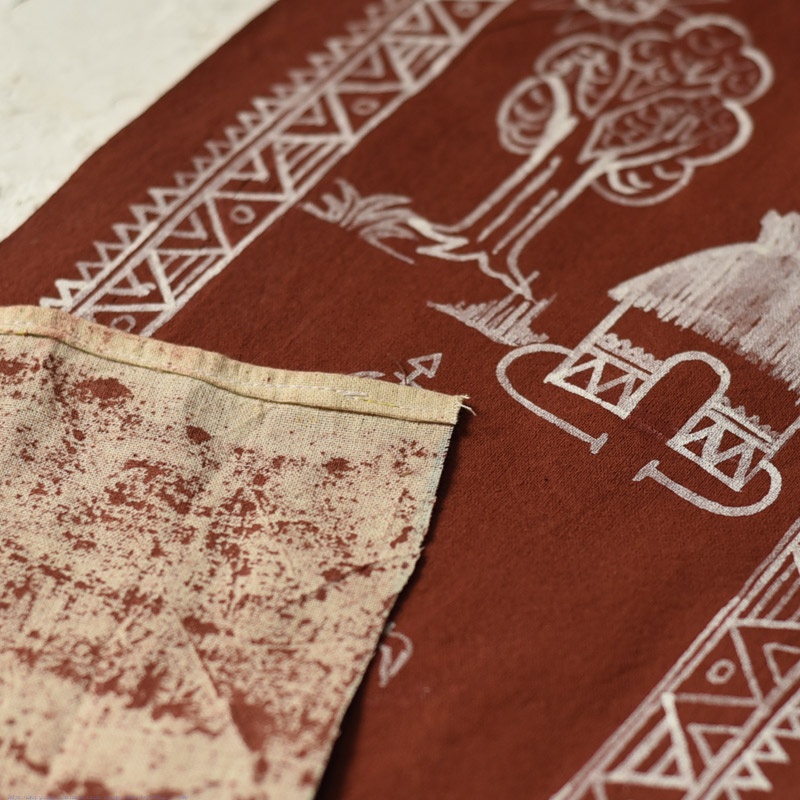
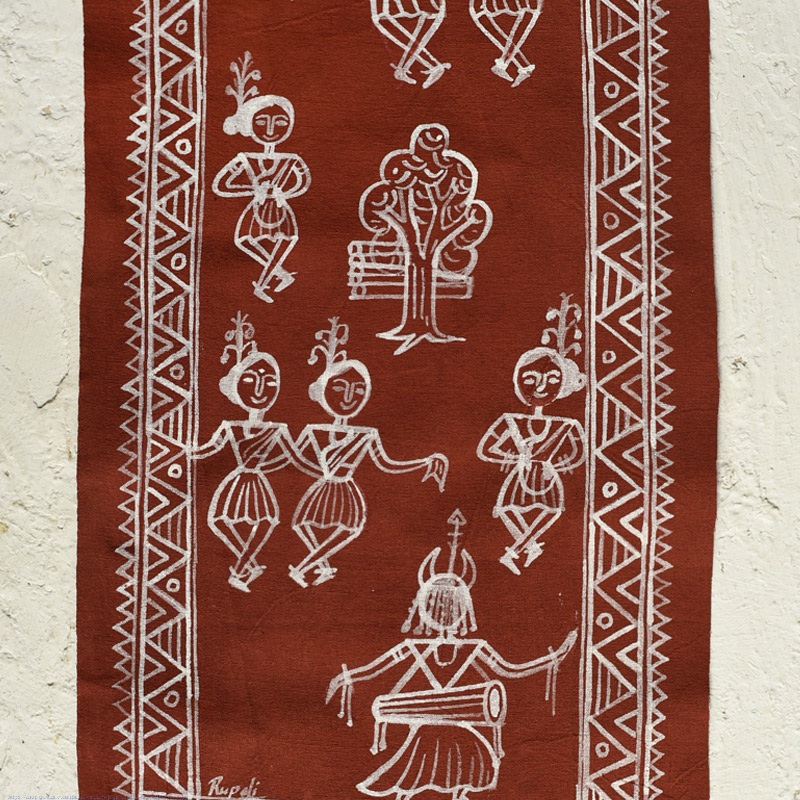





-225x150w.jpg)
-225x150w.jpg)
-225x150w.jpg)
-225x150w.jpg)
-225x150w.jpg)
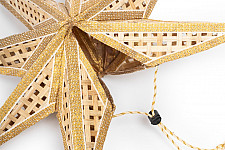
-225x150w.jpg)
-225x150w.jpg)
-225x150w.jpg)
-225x150w.jpg)
-225x150w.jpg)
-225x150w.jpg)
-225x150w.jpg)
-225x150w.jpg)
/12_04_2022/Gond-Art-Hiran-14x-22-225x150h.jpg)
/12_04_2022/Gond-painting-on-paper-18-1-225x150w.jpg)
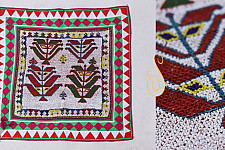
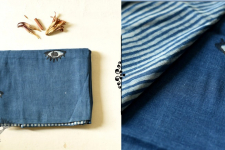
-225x150.jpg)
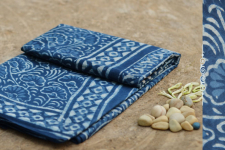
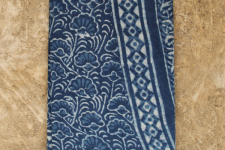
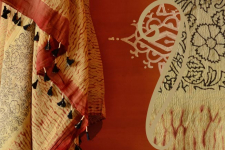
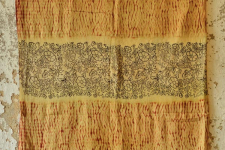
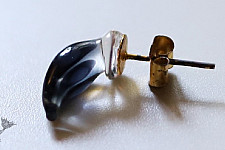
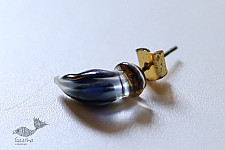
/29_02_2024/Gond-Art-Birds-on-Tree-Hand-Painted-Canvas-Gond-Painting-3-X-5-Feet-225x150h.jpg)
/29_02_2024/09-2-225x150w.jpg)
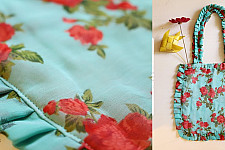
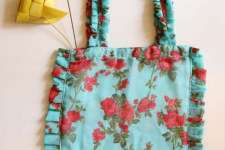
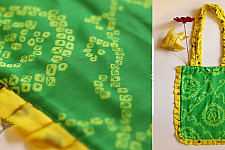
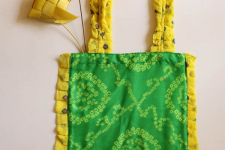
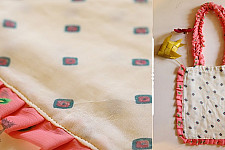
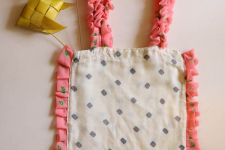
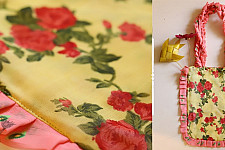
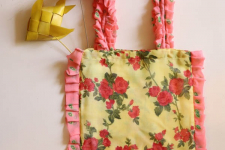
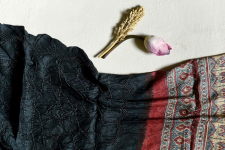
-225x150w.jpg)
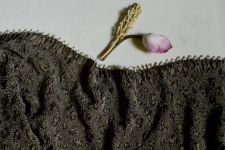
-225x150w.jpg)
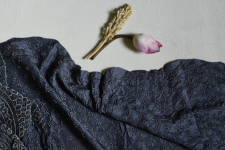
-225x150w.jpg)
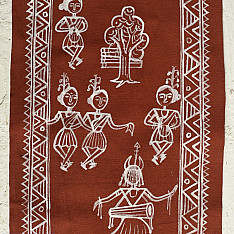
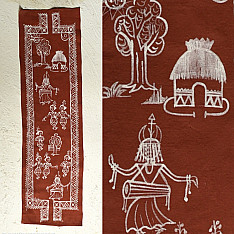

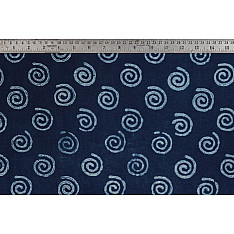
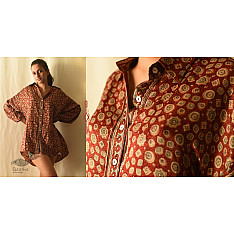
-234x234h.jpg)